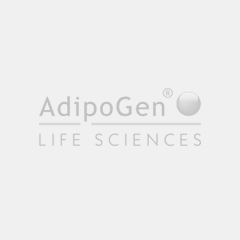Cookie Policy: This site uses cookies to improve your experience. You can find out more about our use of cookies in our Privacy Policy. By continuing to browse this site you agree to our use of cookies.
Bertin Bioreagent
anti-VE-Cadherin (Cad 3 Domain), pAb
As low as
916
CHF
CHF 916.00
In stock
Only %1 left
BRT-A03144-C100100 µgCHF 916.00

| Product Details | |
|---|---|
| Synonyms | Cadherin-5; Vascular Endothelial Cadherin; CD144; 7B4 Antigen |
| Product Type | Polyclonal Antibody |
| Properties | |
| Source/Host | Rabbit |
| Immunogen/Antigen | Fragment Cad 3 of human VE-Cadherin. |
| Application | Western blot, Immunofluorescence |
| Formulation | Liquid. 0.1M Tris Glycine pH 7.8, 0.02% sodium azide. |
| Other Product Data |
Click here for Original Manufacturer Product Datasheet |
| Declaration | Manufactured by Bertin Bioreagent |
| Shipping and Handling | |
| Shipping | BLUE ICE |
| Long Term Storage | -20°C |
| Use/Stability | Stable for at least 2 years after receipt when stored at -20°C. |
| Documents | |
| Product Specification Sheet | |
| Datasheet |
 Download PDF Download PDF |
Description
Cadherins are calcium-dependent cell adhesion proteins. They preferentially interact with themselves in a homophilic manner in connecting cells; cadherins may thus contribute to the sorting of heterogeneous cell types. VE-cadherin, also known as CD144, is a type II classical cadherin and member of the cadherin superfamily of calcium-dependent cell adhesion molecules1 It is composed of an N-terminal signal peptide, a pro-peptide, five extracellular cadherin repeats that bind to homotypic cadherins, a transmembrane domain, and a cytoplasmic tail that interacts with the cytoskeleton. VE-cadherin is endothelial cell-specific and is localized to intracellular junctions where it participates in vascular structure assembly. It associates with alpha-catenin forming a link to the cytoskeleton. It acts in concert with KRIT1 to establish and maintain correct endothelial cell polarity and vascular lumen. Cad3 refers specifically to the third extracellular cadherin (EC3) domain of VE-cadherin. Each of these domains contributes to homophilic binding (VE-cadherin interacting with other VE-cadherin molecules on adjacent cells) and regulates endothelial cell junction stability.





